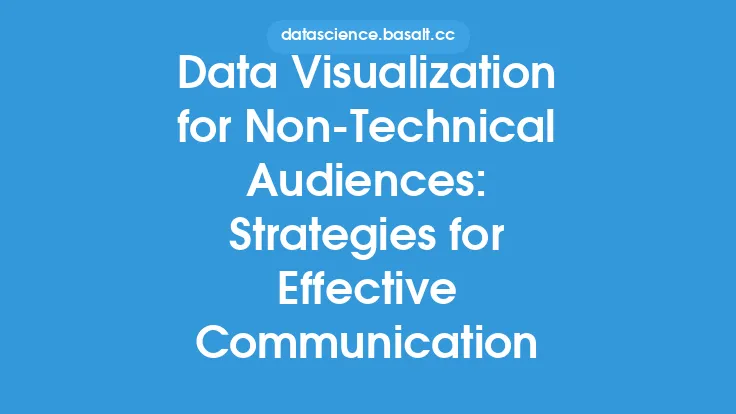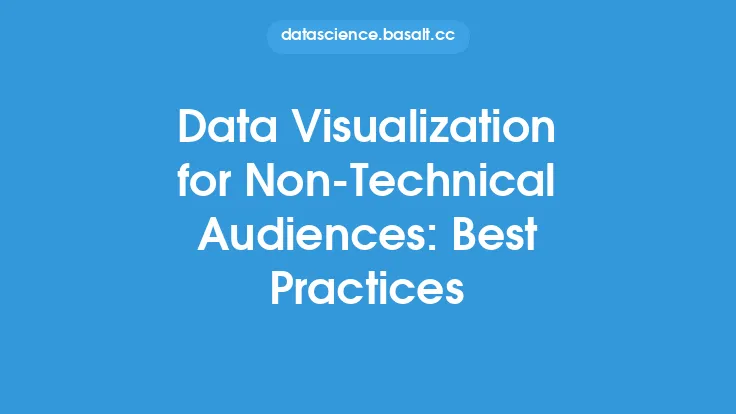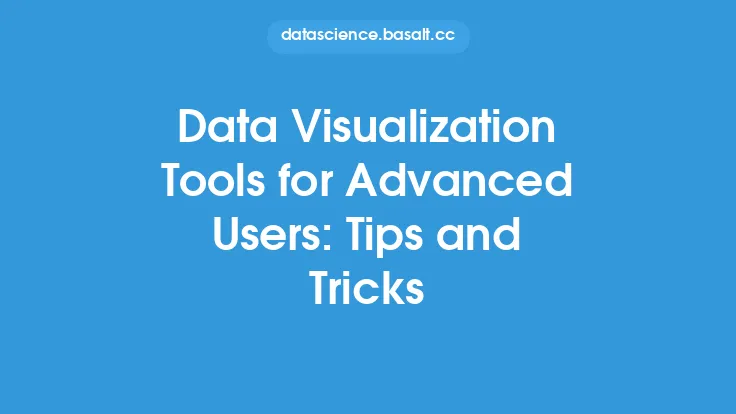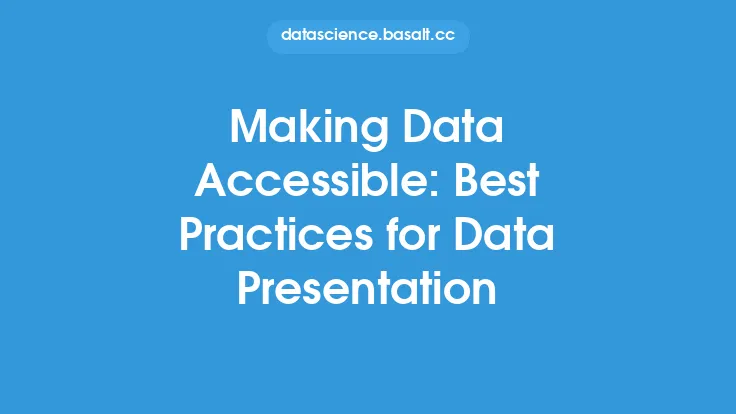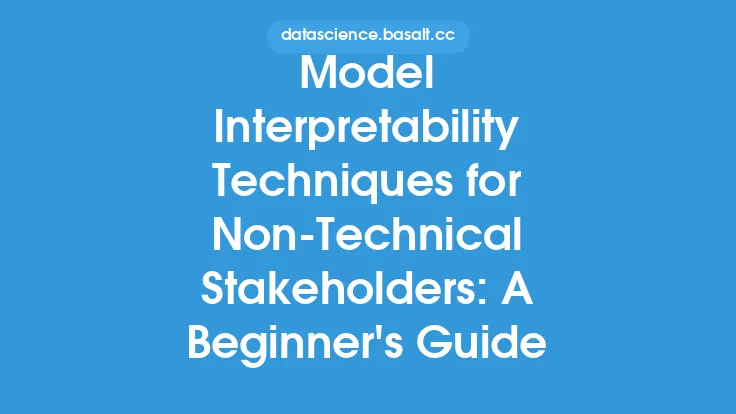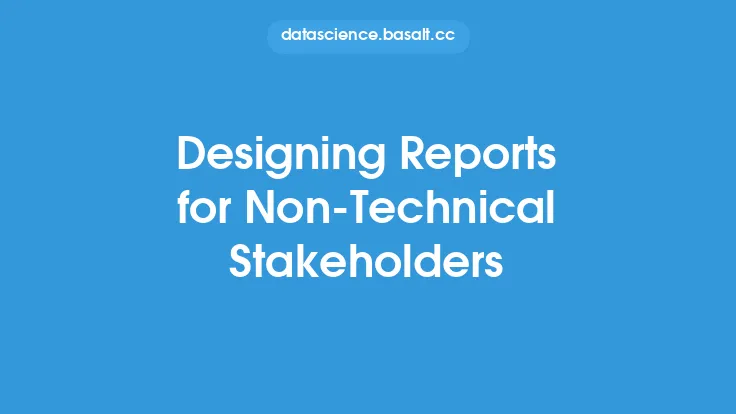When presenting data to non-technical audiences, the goal is to communicate complex information in a clear and concise manner, avoiding technical jargon and focusing on the key insights and findings. This requires a thoughtful approach to data presentation, taking into account the audience's level of understanding and the story that the data is trying to tell. In this article, we will explore the best practices for presenting data to non-technical audiences, including tips for creating effective visualizations, using clear and simple language, and avoiding common pitfalls.
Understanding Your Audience
Before presenting data to a non-technical audience, it's essential to understand who they are and what they care about. What are their goals and objectives? What questions do they want answered? What level of technical expertise do they possess? By understanding your audience, you can tailor your presentation to their needs, using language and visualizations that resonate with them. For example, if you're presenting data to a group of business stakeholders, you may want to focus on the key performance indicators (KPIs) that drive business decisions, such as revenue growth, customer acquisition, and retention. On the other hand, if you're presenting data to a group of policymakers, you may want to focus on the social and economic implications of the data, such as the impact on public health, education, or the environment.
Keeping it Simple
One of the most significant challenges when presenting data to non-technical audiences is avoiding technical jargon and complex statistical concepts. While it's tempting to dive into the details of your analysis, it's essential to keep your language simple and accessible. Avoid using technical terms or acronyms that may be unfamiliar to your audience, and focus on the key findings and insights that emerge from the data. For example, instead of saying "the regression analysis indicates a statistically significant correlation between the variables," you could say "the data shows a strong relationship between the variables, which suggests that changes in one variable are associated with changes in the other." By using clear and simple language, you can help your audience understand the data and its implications, without getting bogged down in technical details.
Effective Visualizations
Visualizations are a powerful tool for communicating data insights to non-technical audiences. By using charts, graphs, and other visualizations, you can help your audience understand complex data patterns and trends, and make the data more engaging and interactive. When creating visualizations for non-technical audiences, it's essential to keep them simple and intuitive. Avoid using complex or specialized visualizations, such as scatter plots or heat maps, which may be unfamiliar to your audience. Instead, focus on simple and familiar visualizations, such as bar charts, line graphs, and pie charts. Additionally, use clear and concise labels and titles, and avoid cluttering the visualization with too much information. By keeping your visualizations simple and intuitive, you can help your audience quickly understand the key insights and findings, and make the data more accessible and engaging.
Storytelling with Data
Data storytelling is a powerful technique for presenting data to non-technical audiences. By using narratives and anecdotes to illustrate the data, you can make the data more engaging and memorable, and help your audience understand the key insights and findings. When storytelling with data, it's essential to focus on the key message or theme that emerges from the data, and use the data to illustrate and support that message. Avoid getting bogged down in technical details or complex statistical concepts, and focus on the practical implications and applications of the data. For example, instead of saying "the data shows a 25% increase in sales over the past quarter," you could say "our sales team has been working hard to reach new customers, and the data shows that their efforts are paying off, with a 25% increase in sales over the past quarter." By using storytelling techniques, you can make the data more engaging and memorable, and help your audience understand the key insights and findings.
Avoiding Common Pitfalls
When presenting data to non-technical audiences, there are several common pitfalls to avoid. One of the most significant pitfalls is using technical jargon or complex statistical concepts, which can confuse and intimidate your audience. Another pitfall is using visualizations that are too complex or specialized, which can be difficult for your audience to understand. Additionally, avoid using too much data or too many visualizations, which can overwhelm and confuse your audience. Instead, focus on the key insights and findings, and use simple and intuitive language and visualizations to communicate those insights. By avoiding these common pitfalls, you can create a clear and effective data presentation that resonates with your audience and helps them understand the key insights and findings.
Best Practices for Data Presentation
In addition to the tips and techniques outlined above, there are several best practices for data presentation that can help you create a clear and effective presentation. One of the most significant best practices is to keep your presentation focused and concise, avoiding unnecessary details or technical concepts. Another best practice is to use high-quality visualizations that are simple, intuitive, and easy to understand. Additionally, use clear and concise language, avoiding technical jargon or complex statistical concepts. Finally, practice your presentation before delivering it to your audience, to ensure that you can communicate the key insights and findings clearly and effectively. By following these best practices, you can create a data presentation that is clear, concise, and engaging, and helps your audience understand the key insights and findings.
Conclusion
Presenting data to non-technical audiences requires a thoughtful and nuanced approach, taking into account the audience's level of understanding and the story that the data is trying to tell. By using simple and intuitive language, effective visualizations, and storytelling techniques, you can create a clear and engaging data presentation that resonates with your audience and helps them understand the key insights and findings. Additionally, by avoiding common pitfalls and following best practices for data presentation, you can ensure that your presentation is focused, concise, and effective, and helps your audience understand the practical implications and applications of the data. Whether you're presenting data to business stakeholders, policymakers, or other non-technical audiences, the tips and techniques outlined in this article can help you create a clear and effective data presentation that drives insights and action.
